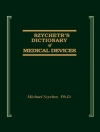This book is perhaps the most stunning available demonstration of the explanatory power of the parametric approach to linguistic theory. It is akin, not to a deductive proof, but to the discovery of a footprint in a far-off place which leaves an archeologist elated. The book is full of intricate reasoning, but the stunning aspect is that the reasoning moves between not only complex syntax and diverse languages, but it makes predictions about what two-year-old children will assume about the jumble of linguistic input that confronts them. Those predictions, Hyams shows, are supported by a discriminating analysis of acquisition data in English and Italian. Let us examine the linguistic context for a moment before we discuss her theory. The ultimate issue in linguistic theory is the explanation of how a child can acquire any human language. To capture this fact we must posit an innate mechanism which meets two opposite constraints: it must be broad enough to account for the diversity of human language, and narrow enough so that the child does not make irrelevant hypotheses about his own language, particularly ones from which there is no recovery. That is, a child must not posit a grammar which permits all of the sentences of a language as well as other sentences which are not in the language. In a word, the child must not create a language in which one cannot make adult discriminations between grammatical and ungrammatical.
Nina Hyams
Language Acquisition and the Theory of Parameters [PDF ebook]
Language Acquisition and the Theory of Parameters [PDF ebook]
¡Compre este libro electrónico y obtenga 1 más GRATIS!
Idioma Inglés ● Formato PDF ● ISBN 9789400946385 ● Editorial Springer Netherlands ● Publicado 2012 ● Descargable 3 veces ● Divisa EUR ● ID 4703862 ● Protección de copia Adobe DRM
Requiere lector de ebook con capacidad DRM












